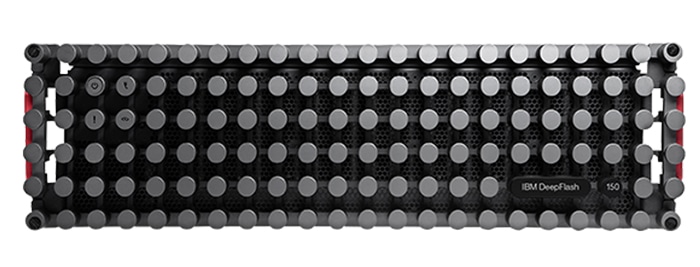Today IBM announced its latest all-flash array (AFA) entry, the IBM DeepFlash 150. DeepFlash 150 adds to IBM’s existing offerings of AFAs. This new array is aimed at processing and manipulating Big Data in a cost-effective manner. With this addition, IBM is now offering a flash portfolio the covers almost all workloads.

Big Data just keeps getting bigger. Every day more connected devices are introduced and every second more and more social media posts are being made. Most companies now recognize that this data can result in insights that can result in more business efficiencies and generate higher revenue. Storing all of the data is one issue; being able to manage and analyze it is another. IBM has partnered with SanDisk to leverage its InfiniFlash hardware for the DeepFlash 150, a plan they first mentioned back in March.
IBM DeepFlash 150 is designed to be price competitive while still being able to process massive data sets. IBM states that its new array has an all-flash density up to 170TB per rack unit or 7PB of flash in a single rack space. This high level of flash density makes the DeepFlash 150 ideal for financial services, healthcare, eCommerce, telecommunications, media and entertainment, and cloud service providers.
Aside from having high capacity and flash performance, the DeepFlash 150 is also being touted as highly cost effective at less than $1/GB. IBM is recommended that customers combine DeepFlash 150 with its IBM Spectrum Scale giving them both the overlying storage services and functionality critical for optimization of their big data workloads.




 Amazon
Amazon